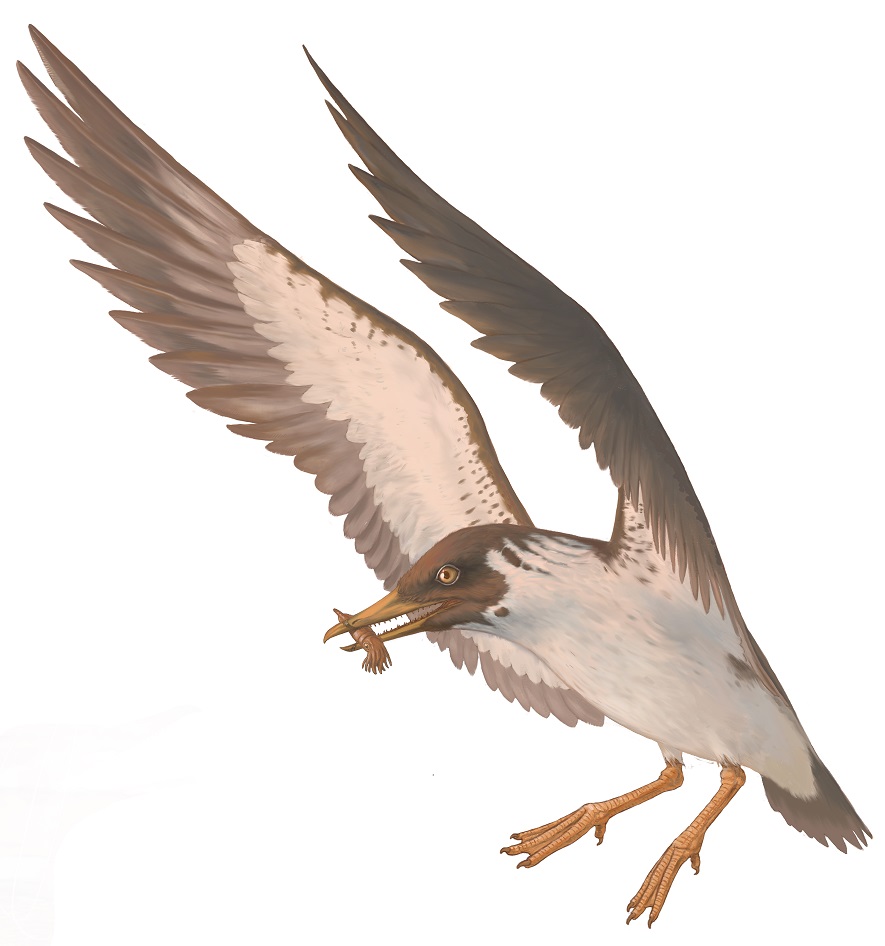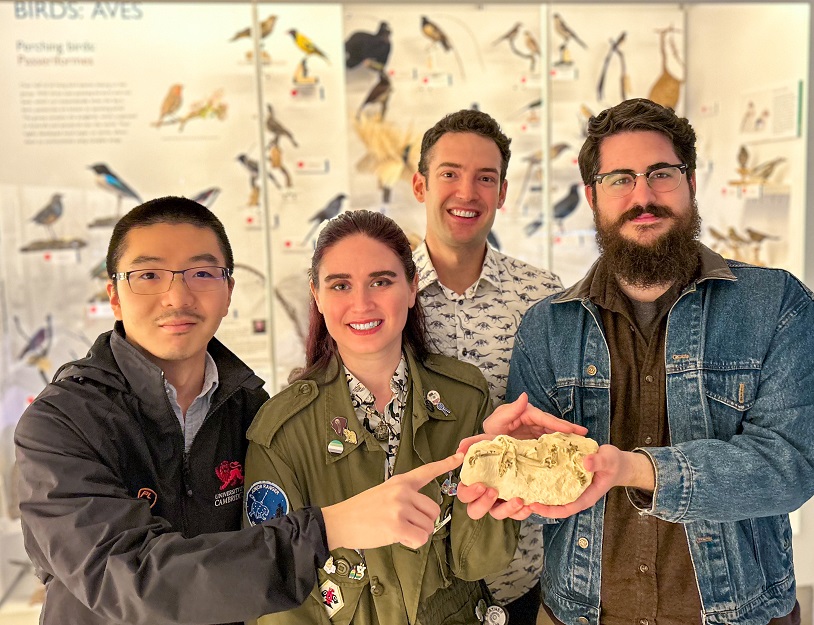A research team led by Christ’s Fellow, Dr Daniel Field, has identified a new dino-bird – Janavis finalidens – which is one of the world’s last toothed birds.
The findings, based on the examination of a fossil dating from the last years of the dinosaurs discovered on the Belgian-Dutch border in the 1990s, rewrites our understanding of a key evolutionary feature of modern birds.
Dr Field said:
“Evolution doesn’t happen in a straight line. This fossil shows that the mobile beak – a condition we had always thought post-dated the origin of modern birds, actually evolved before modern birds existed. We’ve been completely backwards in our assumptions of how the modern bird skull evolved for well over a century.”

Since 1867 birds have been classified in one of two groups: those with an ‘ancient jaw’ where the palate bones are fused into a solid mass (like humans) and those with a ‘modern jaw’ which has a hinged joint. This mobile hinged jaw enables better dexterity for gathering food or building nests.
Dr Juan Benito, a postdoc member of Field’s lab and first author on a paper published in the journal Nature last week, examined the fossil – named Janavis – during the Covid-19 lock-down.
Reinvestigation of the fossil, which was first studied in 2002, corrects a number of previous misconceptions. For instance, an element initially suggested to be a shoulder bone turned out to be a key portion of the palate (the roof of the mouth), illustrating that Janavis had a modern, mobile beak.
Pen-Chen Kuo, PhD student in Field’s lab and co-author, explained that CT scans showed that the fossil palate bone was ‘extremely similar to those of living chickens and ducks’.
Christ’s PhD student and co-author Klara Widrig, also of Field’s lab, said:
“Surprisingly, the bird palate bones that are the least similar to that of Janavis are from ostriches and their kin.”

For reasons still not yet understood, the fused ‘ancient jaw’ of birds like ostriches appears to have evolved from the mobile ‘modern jaw’ condition seen in Janavis finalidens and 99% of modern birds.
The research of the Cambridge team together with the Natural History Museum of Maastricht suggests that the jaws of birds like ostriches and emus evolved ‘backwards’, reverting to a more primitive condition after modern birds arose.
You can watch a short film about Janavis.
Reference:

